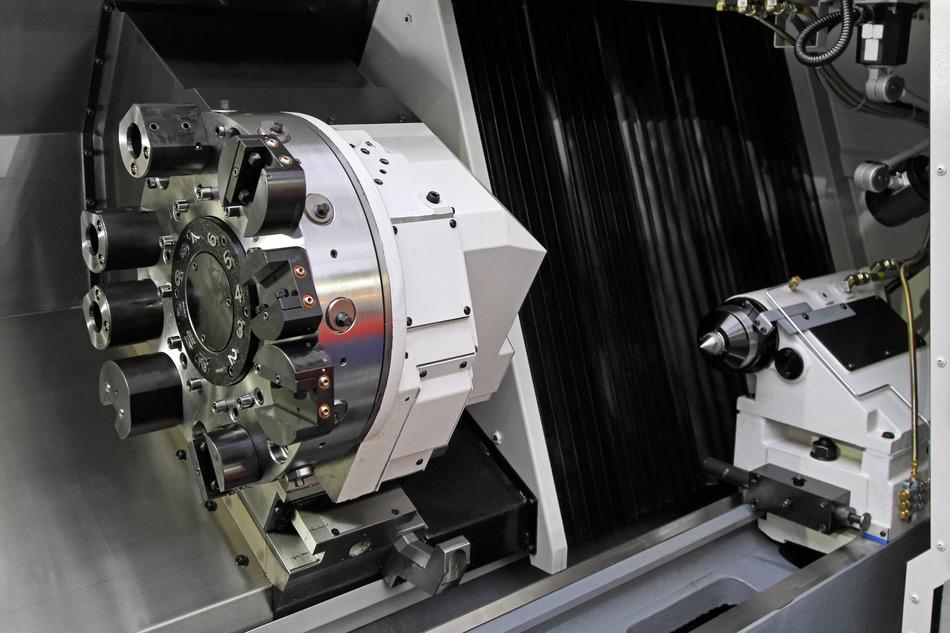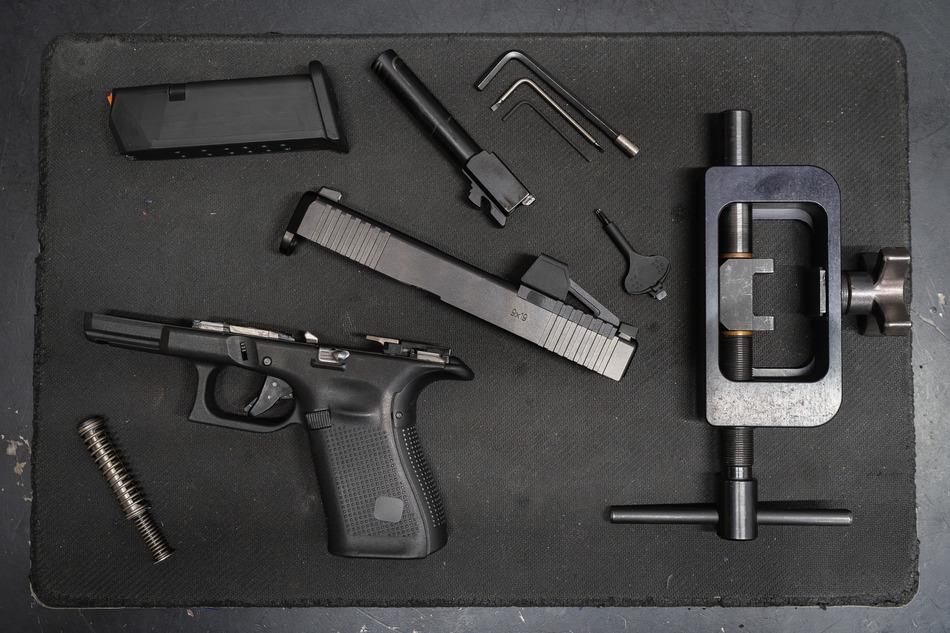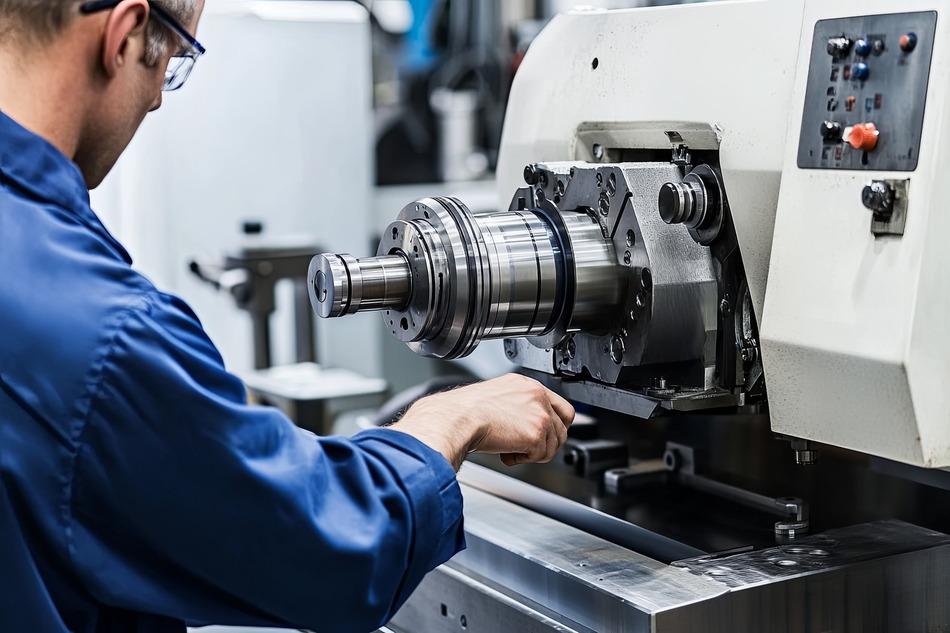What Are Lathe Bits Made Of & When to Replace Them
Lathe bits are the cutting tools used in CNC and manual lathes to shape metal, wood, or plastic parts. These tools are designed to withstand high pressure, intense heat, and heavy-duty operation. But not all lathe bits are created the same. Understanding what they’re made of—and knowing the right time to replace them—can help you boost efficiency, extend tool life, and reduce costly downtime.
Material Selection Matters in Performance
Understanding the unique properties of each material can help you select the most efficient and cost-effective tool for your shop’s needs. This guide will walk you through the most common materials used in lathe bits, how they compare in real-world applications, the different types of bits available, and the warning signs that indicate it’s time for a replacement.
Common Materials Used in Lathe Bits
Lathe bits are manufactured from a variety of materials, each engineered to meet different machining needs. Choosing the right bit depends on the part material, required finish, production volume, and performance expectations. Here’s a deeper look at the most common types:
High-Speed Steel (HSS)
High-Speed Steel is a versatile and widely used material for lathe bits, particularly in general-purpose machining. It maintains hardness under moderate heat and is ideal for soft to medium metals like aluminum, brass, and mild steel.
HSS bits are especially popular in smaller shops, schools, and repair facilities due to their low cost and ease of sharpening. They’re suitable for operations that don’t demand extreme cutting speeds or surface finishes. In situations where flexibility, repeated resharpening, and durability are valued over sheer speed, HSS remains a solid choice. It’s also a good fit for manual lathes and entry-level CNC applications.
Advantages:
- Easy to sharpen multiple times
- Affordable and readily available
- Tough and less brittle than harder alternatives
- Reliable for light to medium-duty applications
Drawbacks:
- Dulls faster than carbide under continuous use
- Less effective for high-speed machining or cutting hard metals
Carbide
Carbide lathe bits are manufactured from tungsten carbide or a blended composite. These tools are extremely hard and ideal for high-speed operations on tough materials such as stainless steel, cast iron, and titanium.
Carbide tools are common in production environments where high cutting speeds and reduced tool changes are critical. They offer excellent wear resistance but require careful handling due to their brittleness. Carbide bits can be uncoated or coated with layers such as titanium nitride (TiN) or aluminum oxide (Al2O3) to enhance performance and reduce friction.
Advantages:
- Maintains sharp edges for extended periods
- Ideal for hard materials and fast operations
- Great for reducing overall cycle time
- Resists high heat and deformation
Drawbacks:
- Higher upfront cost
- Brittle and prone to chipping if mishandled
- Requires stable and precise machine setups
Cobalt Steel
Cobalt steel is an upgraded variant of HSS that includes 5–8% cobalt content. This addition increases heat resistance and wear life, making cobalt tools a reliable option for harder metals and more aggressive cutting applications.
Machinists who require a tool that lasts longer than HSS but don’t need full carbide strength often turn to cobalt. It’s a cost-effective middle ground for medium-duty applications. These bits are often used in automotive and industrial shops for medium carbon steels, tool steels, and stainless grades where consistent edge retention is needed without overspending on full carbide tools.
Advantages:
- Improved heat and wear resistance over HSS
- Longer tool life without a huge cost increase
- Effective on stainless steel and tougher alloys
- Sharpenable like HSS
Drawbacks:
- Slightly more expensive than HSS
- Still not as hard or long-lasting as carbide
- Requires resharpening to maintain edge integrity
Ceramic & Diamond-Tipped Bits
These advanced tooling options are designed for high-speed, high-precision applications. Ceramic bits excel at handling high temperatures and are perfect for hardened steels. Diamond-tipped tools are best for non-ferrous and abrasive materials like composites, aluminum alloys, and graphite.
These bits are reserved for situations where surface finish, tool longevity, and dimensional accuracy are top priorities. They’re frequently seen in sectors such as medical manufacturing, electronics, and aerospace—where consistent part geometry, tight tolerances, and superior finish are non-negotiable. Due to their high cost and fragility, these tools are often reserved for finishing passes or low-interruption cuts.
Advantages:
- Unmatched hardness and resistance to wear
- Capable of delivering ultra-fine surface finishes
- Supports extremely high-speed operations
- Exceptionally long-lasting with proper use
Drawbacks:
- High cost per tool
- Extremely brittle; unsuitable for interrupted cuts or unstable machines
- Demands controlled conditions to avoid premature breakage
Types of Lathe Bits
The shape of the lathe bit is just as important as the material. Different tools serve different functions, and having the right one improves both quality and efficiency.
- Turning Tools: Used for shaping the outside of a workpiece, turning tools come in various shapes depending on the contour or surface being produced. They can create straight, tapered, or contoured profiles with ease.
- Boring Bars: Designed for internal cuts or enlarging holes. These are commonly used after drilling to ensure the interior diameter meets precise specifications. They’re ideal for deep-hole machining and often include anti-vibration features.
- Parting Tools: Used to cut off a finished section from the rest of the stock. Parting tools come in thin profiles and are mounted perpendicular to the workpiece, allowing for clean, accurate cuts.
- Threading Tools: Creates threads on a part’s surface. Available in external and internal formats, threading tools are essential for producing bolts, nuts, and threaded components used in assemblies.
- Facing Tools: Smooths the end face of the material. This tool cuts across the face of the workpiece, leaving a flat surface that’s perpendicular to its axis. It’s often the final pass in lathe machining.
Each tool type may be available in multiple materials and feature coatings or treatments designed for specific cutting tasks. Choosing the correct shape and material combination ensures better efficiency, improved finish quality, and reduced tool wear.
When to Replace Lathe Bits
Even the highest-quality lathe bits eventually wear down. Continuing to use a worn bit can compromise accuracy, increase tool pressure, shorten machine life, and degrade part quality. Recognizing the early warning signs of bit fatigue not only prevents part failures but also improves overall machining efficiency.
- Dull or Rounded Cutting Edge
A lathe bit that appears dull or loses its sharp edge won’t cut efficiently. This often leads to increased friction, slower material removal, rougher finishes, and excess heat during operation. A visual inspection or finger test (with proper safety precautions) can often detect a dull edge before major issues arise. - Chipping or Cracks
Carbide and ceramic tools are especially prone to chipping. Even small fractures can reduce cutting accuracy or cause breakage during use. Always inspect tips for cracks and replace damaged bits promptly to avoid safety hazards. In high-speed operations, minor chipping can escalate quickly, damaging both the tool and the workpiece. - Poor Surface Finish
If your parts start to show rough finishes, visible tool marks, or inconsistent textures, it could be a sign that your bit has reached the end of its usable life. Surface inconsistencies are especially critical in industries like aerospace or medical manufacturing, where flawless finishes are essential. - Excessive Vibration or Noise
Worn or poorly seated lathe bits often produce unusual vibrations or loud noises. These symptoms suggest the bit may be misaligned, chipped, or no longer balanced—putting both your tool and machine at risk. Persistent vibration can also affect adjacent components, leading to more widespread machine wear. - Increased Cutting Resistance
A noticeable increase in resistance, especially if the machine slows down or overheats during cuts, is a common warning sign. This typically means the edge is too worn to maintain efficient contact with the material. Operators may find themselves adjusting feeds and speeds just to keep the process moving—an indicator that a tool change is overdue. - Runout and Tool Deflection
Runout—wobbling caused by uneven tool rotation—can result from wear, poor tool holding, or improper installation. Deflection, especially with long or slender tools, leads to dimensional inaccuracy and inconsistent finishes. Both are signs your bit needs attention. These conditions also increase tool pressure, putting additional strain on the spindle and toolholder.
How to Extend Lathe Bit Life
Choose the Right Tool for the Job
Always match the lathe bit material and geometry to the type of material being cut and the demands of the operation. Using a tool that’s not designed for your application can lead to faster wear, reduced precision, and even tool failure.
Optimize Cutting Conditions
Carefully adjust cutting speed (RPM), feed rate, and depth of cut to suit your tool and material. These parameters help reduce tool stress and excessive heat. Following manufacturer-recommended settings not only prolongs tool life but also improves cut quality.
Apply Coolant Effectively
Ensure adequate coolant flow reaches the cutting edge. Coolant not only manages temperature but also removes chips and debris, preventing edge damage from chip re-cutting. Monitor flow rates and use the correct type of coolant for your material and tooling.
Check Tool Alignment Before Each Use
Verify that the tool is mounted correctly and aligned to the spindle axis. Misalignment increases the chance of chipping, reduces tool performance, and accelerates wear. Even small misalignments can lead to inconsistent part quality.
Sharpen Tools When Possible
High-speed steel and cobalt bits can often be resharpened several times before they need to be replaced. Keep an eye on edge sharpness, and resharpen only when the geometry can still be maintained. Investing in proper sharpening tools or professional services will help get the most out of your tools.
Maintenance Tips for Lathe Bits
- Store bits in clean, dry, and clearly labeled containers to prevent corrosion or mix-ups.
- Keep different materials—like HSS and carbide—separated to avoid damage during handling.
- Inspect tools before each use for rust, pitting, or cracks that can compromise performance.
- Clean bits with soft brushes or cloths after use to remove residue and prolong edge sharpness.
- Use tip protectors for brittle materials like ceramic or diamond to prevent microfractures during storage.
- Rotate tools out of production for inspection on a set schedule to avoid running worn bits beyond their life span.
Industry Use Cases
Aerospace
Relies heavily on coated carbide tools for machining titanium and Inconel. These applications demand high heat resistance, precision tolerances, and minimal tool deflection under extreme stress. Predictable tool changes are essential to meet regulatory and safety standards.
Automotive
Uses cobalt and carbide bits to machine cast iron, aluminum, and steel alloys. These shops emphasize efficiency, tool change timing, and low cost per part. Predictable wear patterns help with batch consistency and high throughput.
Medical Manufacturing
Often chooses ceramic or finely honed HSS tools for stainless steel, titanium, and medical-grade plastics. The emphasis here is on precision and immaculate surface finishes. Tools must be changed at the first sign of wear to maintain strict tolerances and hygiene standards.
General Job Shops
Typically favor HSS for affordability and versatility across multiple materials and quick-change environments. These operations often benefit from using sharpenable tools that support diverse material handling with minimal investment.
Long-Term Care Pays Off
Lathe bits play a pivotal role in machining accuracy, productivity, and tool life. Whether you’re using high-speed steel for general-purpose jobs or investing in carbide and ceramic tools for high-precision work, the key is knowing when to replace them and how to care for them.
Monitoring wear signs, maintaining sharpness, and storing tools properly can prevent costly downtime and extend the life of your machine. Establishing a bit inspection routine helps prevent part failure, supports spindle health, and keeps production schedules on track
Don’t wait until part quality suffers—timely tool changes and good maintenance habits help your shop run at its best.
📞 Need help selecting lathe tools or scheduling a tool change? Contact In-House CNC Today at (951) 540-4820 for expert advice and professional support.




